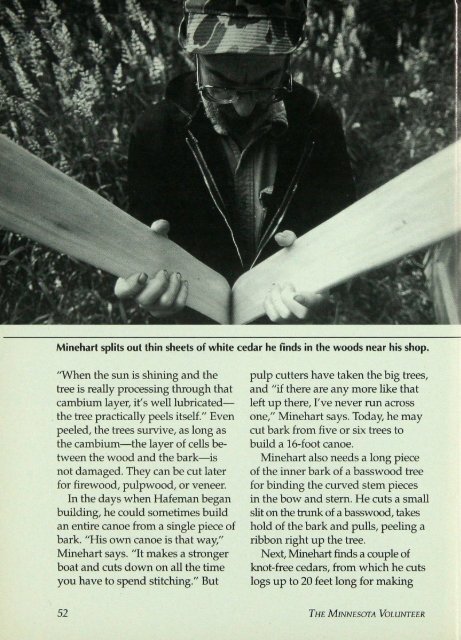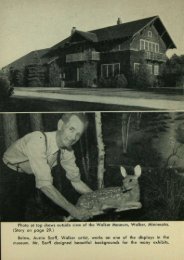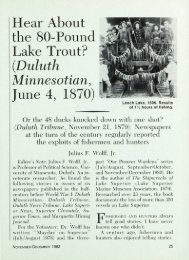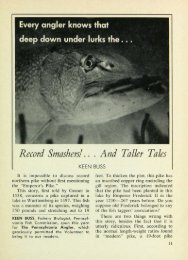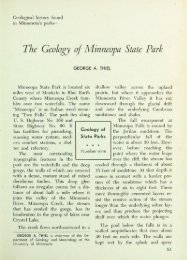282 Building the Bark Canoe - webapps8
282 Building the Bark Canoe - webapps8
282 Building the Bark Canoe - webapps8
- No tags were found...
Create successful ePaper yourself
Turn your PDF publications into a flip-book with our unique Google optimized e-Paper software.
Minehart splits out thin sheets of white cedar he finds in <strong>the</strong> woods near his shop."When <strong>the</strong> sun is shining and <strong>the</strong>tree is really processing through thatcambium layer, it's well lubricated—<strong>the</strong> tree practically peels itself." Evenpeeled, <strong>the</strong> trees survive, as long as<strong>the</strong> cambium—<strong>the</strong> layer of cells between<strong>the</strong> wood and <strong>the</strong> bark—isnot damaged. They can be cut laterfor firewood, pulpwood, or veneer.In <strong>the</strong> days when Hafeman beganbuilding, he could sometimes buildan entire canoe from a single piece ofbark. "His own canoe is that way,"Minehart says. "It makes a strongerboat and cuts down on all <strong>the</strong> timeyou have to spend stitching." Butpulp cutters have taken <strong>the</strong> big trees,and "if <strong>the</strong>re are any more like thatleft up <strong>the</strong>re, I've never run acrossone," Minehart says. Today, he maycut bark from five or six trees tobuild a 16-foot canoe.Minehart also needs a long pieceof <strong>the</strong> inner bark of a basswood treefor binding <strong>the</strong> curved stem piecesin <strong>the</strong> bow and stern. He cuts a smallslit on <strong>the</strong> trunk of a basswood, takeshold of <strong>the</strong> bark and pulls, peeling aribbon right up <strong>the</strong> tree.Next, Minehart finds a couple ofknot-free cedars, from which he cutslogs up to 20 feet long for making54 THE MINNESOTA VOLUNTEER


